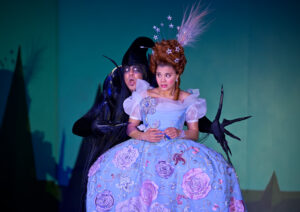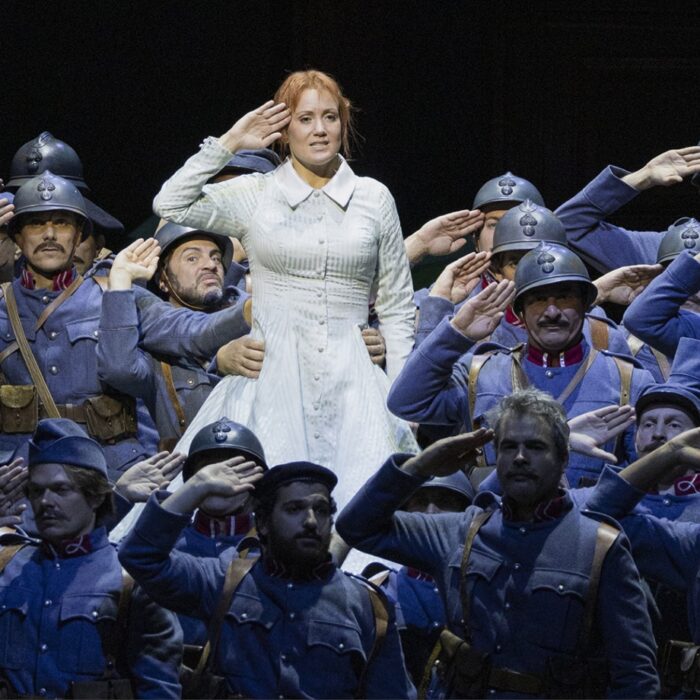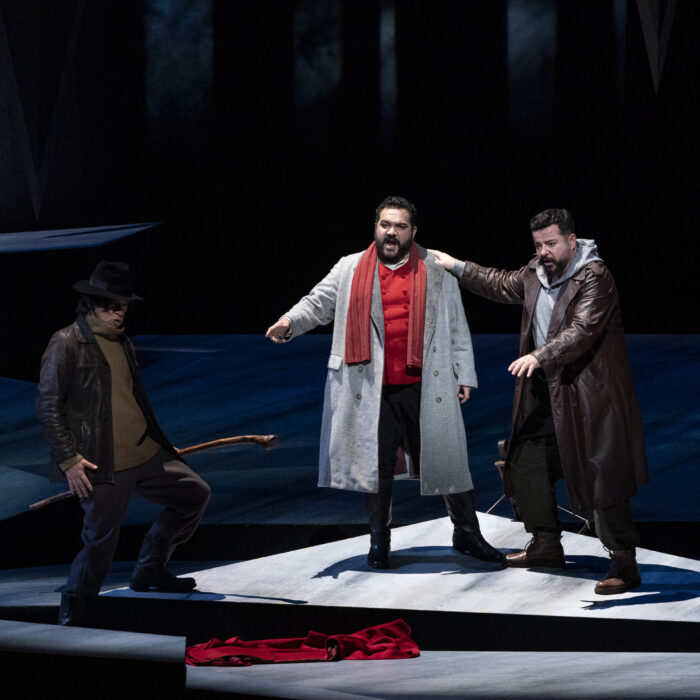
Opéra Comique 2023 Review: Zémire et Azor
By João Marcos Copertino(Photo Credit: DR Stefan Brion)
The works of André de Grétry are seldom performed, nowadays. There is a reason why. Despite all their great merits and genre innovations, Grétry’s operas are always at risk of looking mundane, or even less than ordinary, if not played by inspiring artists.
“Zémire et Azor” is no exception to such an axiom. On the one hand, it is one of the founding operas-comique. The genre of opera with spoken dialogues that shows great attentiveness to the drama. It is also the first “opéra féerie,” in approximate translation, a fairy tale opera. On the other hand, its music is far from exceptional, most of the time, especially if it is played without due attention to the text. The drama is often anti-climactic and the opera ends in a ballet, which also lacks any significant moments of emotional climax.
Reviving a Rare Gem for a New Audience
Michel Fau’s production of “Zémire” revives the opera for a whole new audience, for whom the plot, minus Grétry’s orientalism, is similar to Disney’s “Beauty and the Beast.” Or, in the best scenario, from Jean Cocteau’s masterpiece “La Belle et la Bête.” However, unable to match that film’s magical amazement—who can, after all, surpass the poetical beauty of Josette Day’s levitating into the shadows of the palace? —Fau embraces the ridiculous humor within the plot. And that might have been his smartest decision.
Back in its day, “Zémire” was a success in eighteenth-century Europe. To rescue such fascination in today’s technocratic era might be an impossible task, especially when considering an opera house budget. What remains is a possibility to, through magic, make a critic of the world in which magic is no longer possible, fascinating on stage.
For example, the best moments of the production happen when the ridiculous is present on the stage. Nobody embodies this better than Michel Fau himself, in drag, as the fairy who cursed Azor. The ballets were genuinely comical moments as well, when the least capable of the dancers, Fau himself, replaced any possible aesthetic amusement by the ballets. Otherwise, the scenarios are modest, and the lighting job is rustic. All attention must go the actors, even though they are not proposing any innovation in acting itself. In fact, all spoken parts of the opera were recited in a somewhat old-fashioned form, mocking the language of fairy tales itself.
Leaving a Great Impression
Although the cast presented an efficient vocal performance, it is noticeable that the most impressive musical figures on the stage are not named in the opera’s title. It is hard to leave the opera without a great impression of Marc Mauillon as the Samir, Zémire/Belle’s father. The merits of his instrument are most notably its shades of expression, rather than its innate beauty of tone. Mauillon thrives while singing on the thin line between the comic and the tragic. His skills are extremely well-suited to the performance that is uncertain, whether it is a construction or a deconstruction of the fairy tale genre.
An even more charismatic stage presence is Sahy Ratia as Ali. Brisky, Ratia’s tenor voice is charming, though with a finer emission. His acrobatic entries on stage and his commitment to his character’s weakness of will also proved to be sufficiently funny for Opéra Comique’s audience.
Julie Roset lends to the role of Zémire her beautiful voice and agile instrument. I cannot stress how beautiful Roset’s voice is, especially in the mid and upper range. However, Zémire’s music posed more than a few technical challenges for her. The role requires a wider range than most coloratura sopranos sing. Therefore, it exposed some of the limitations of Roset’s voice. Her low notes were not super audible, though all coloratura sopranos seem to struggle in Zémire’s aria, including Mady Mesplé herself. Furthermore, there were some inconsistencies in the second act. That said, it is extremely good to hear Roset maturing and expanding her repertoire. This season, I have the pleasure of seeing her singing an impeccable Amour in Gluck’s “Orphée et Eurydice,” and after this “Zémire,” it is safe to say that Roset has all the tools to be a striking figure in the lyric-coloratura repertoire.
The Melancholic & Sentimental
Sporting a costume that would be at home in a theatrical production of Kafka’s “Metamorphosis,” Philippe Talbot exaggerates the melancholic and sentimental colors in his making of the monstrous Azor. His monster is melancholic, romantic, and most importantly, over the top. His acting was in the sweet spot, between the ham and the parodic. Again, Talbot has a beautiful instrument, but showed many inconsistencies and lack of focus and brightness in the upper register. His high notes were not as secure as one would expect, and he struggled a bit with intonation, though maybe the orchestra was more at fault here than he was. More on that later. He was such an enjoyable character, nevertheless, and one can only imagine how hard it must have been to act and sing in such an elaborate costume, with heavy makeup. Talbot never dismantled his insect-like persona, and never stayed with his spine straight.
Louis Langrée conducts the orchestra Les Ambassadeurs. As usual, Langrée does an incredible job commanding the action and giving attention to the text. His reading is efficient, musical, and particularly moving in the ballets. Nevertheless, at the very end, at what is perhaps the opera’s best moment, Zémire’s final aria, while Roset is shone calling for her beloved Azor, the orchestra’s horn solos could not provide a proper answer. The horn is the hardest instrument in the orchestra, that is evident.
Little known, “Zémire et Azor” has its charms. It is a refreshing and somewhat cynical approach to a story that has been told so many times that it has lost its capacity to laugh at itself. Grétry’s music has its moments, but it is hard to say that this production is a ‘must-see.’ However, when it comes to opera, I believe that it is better to see than not to see.


